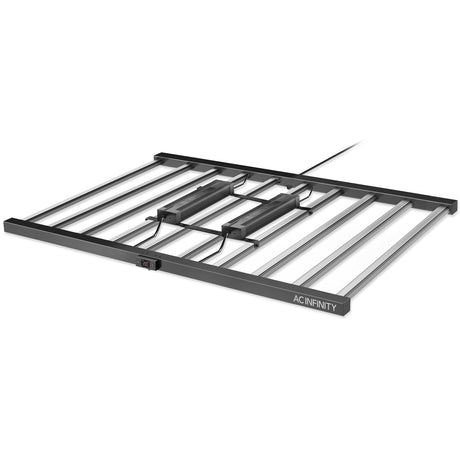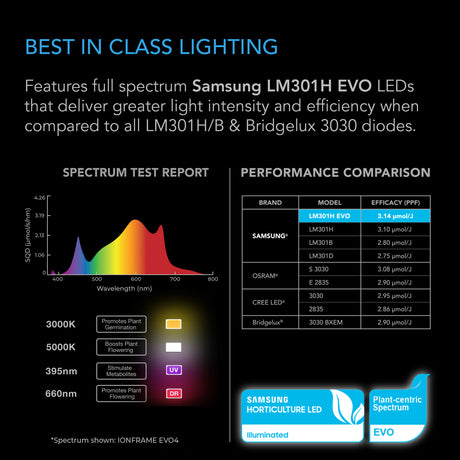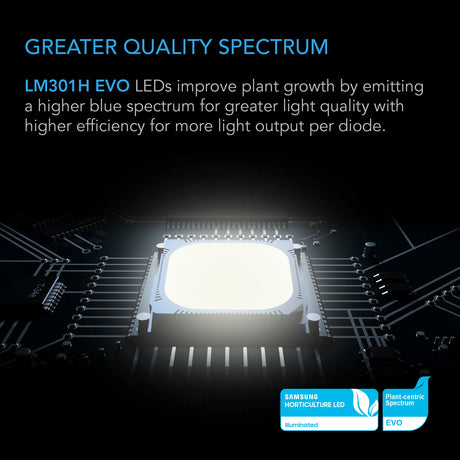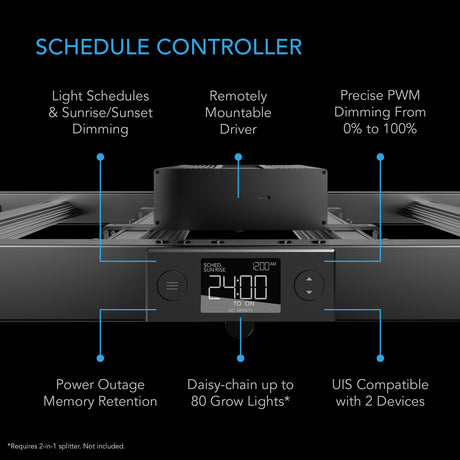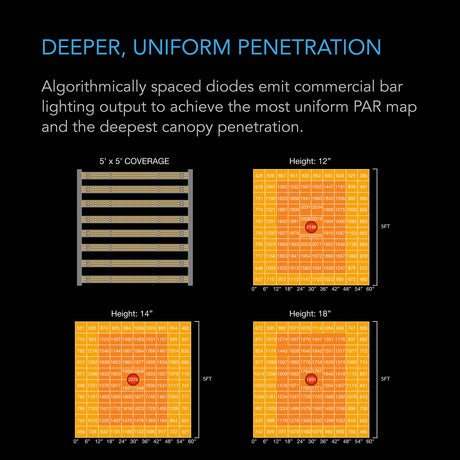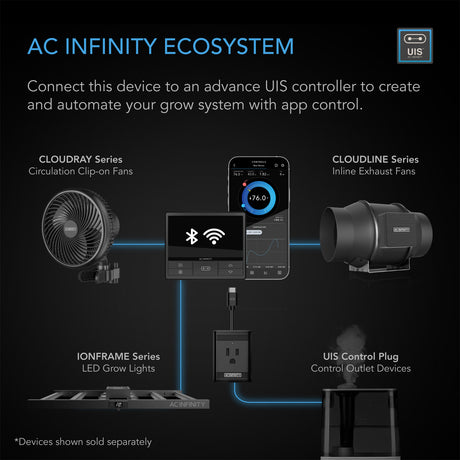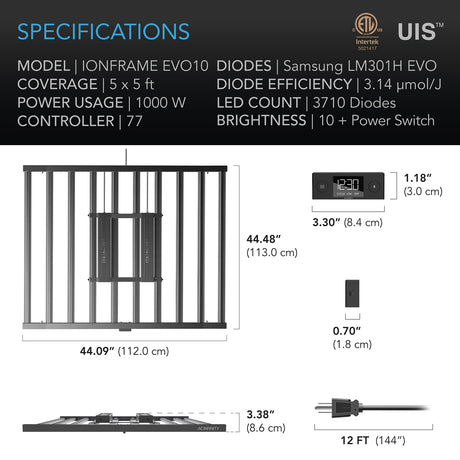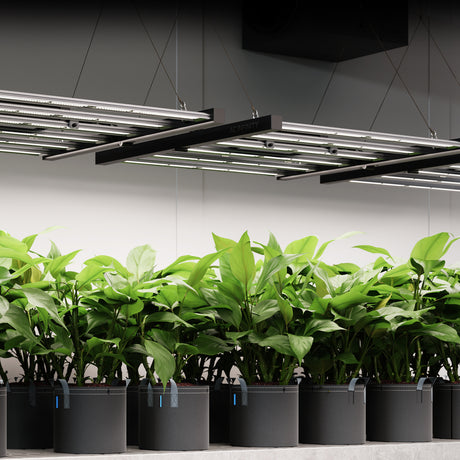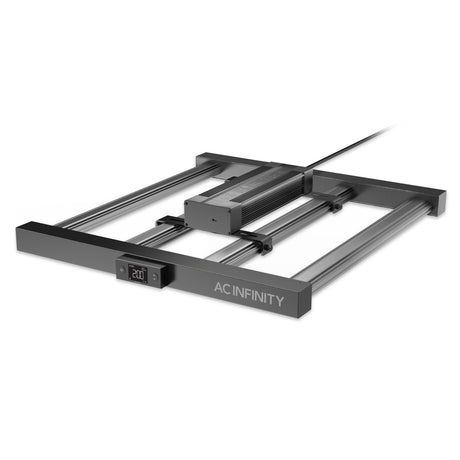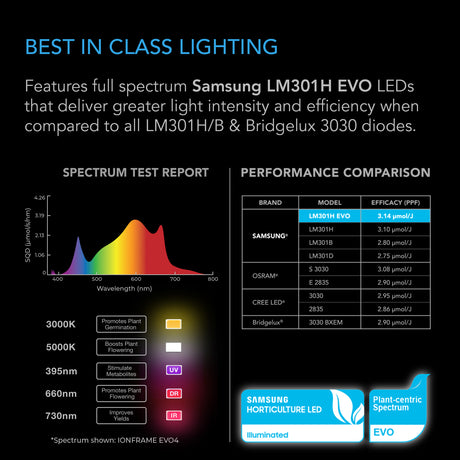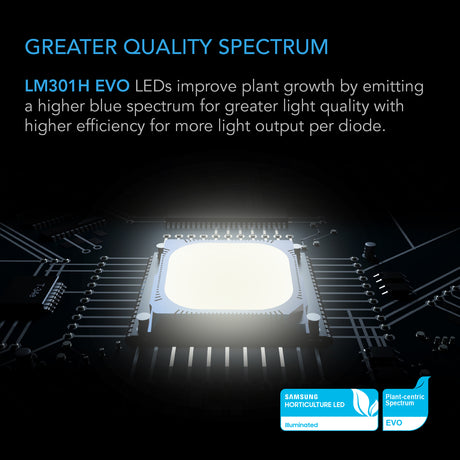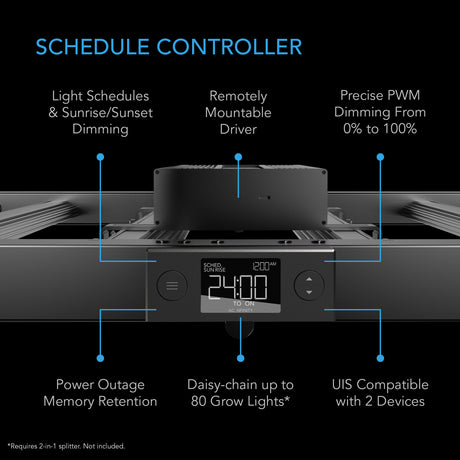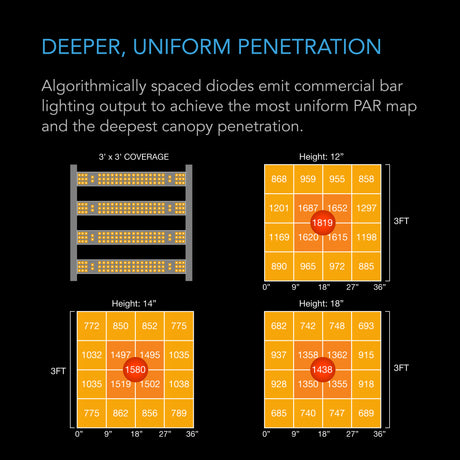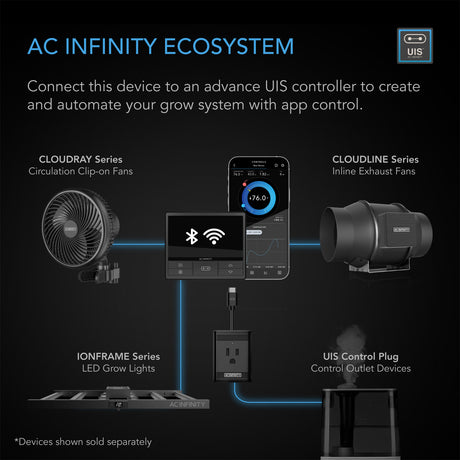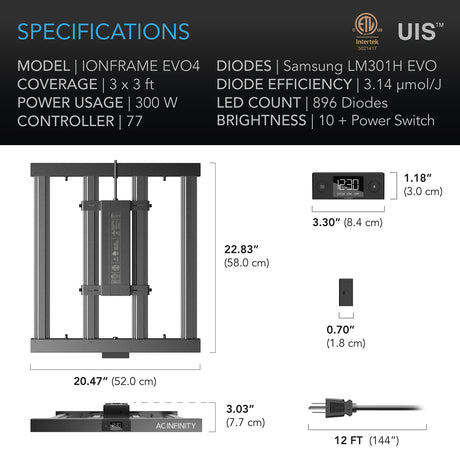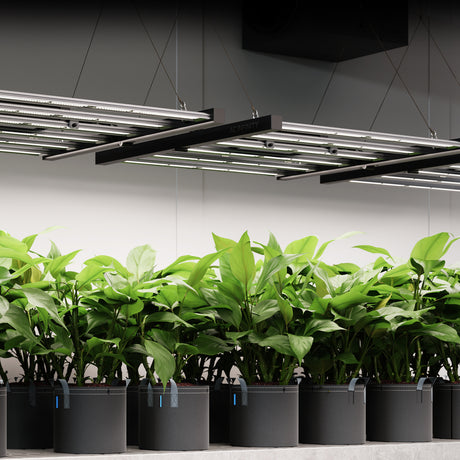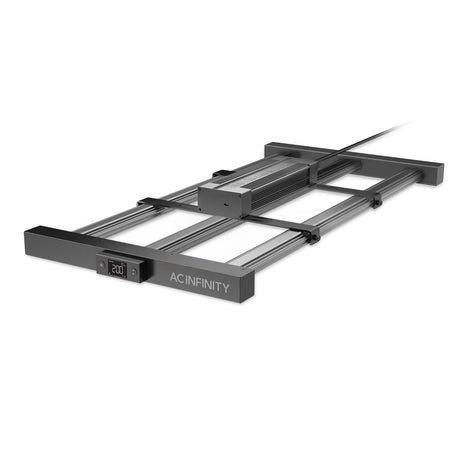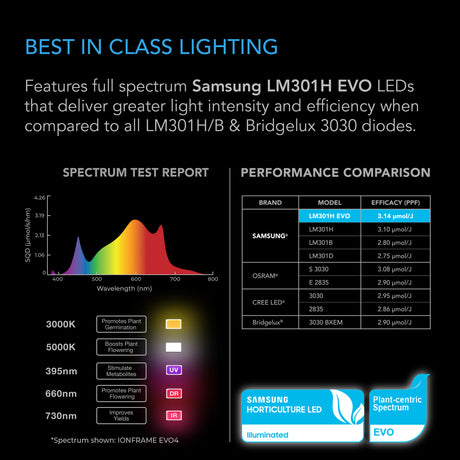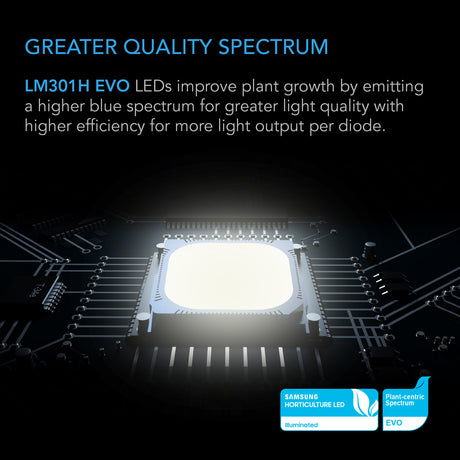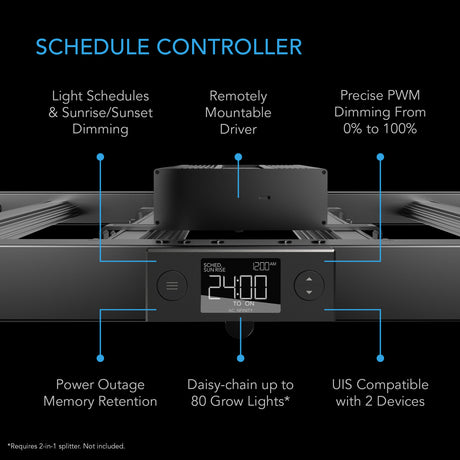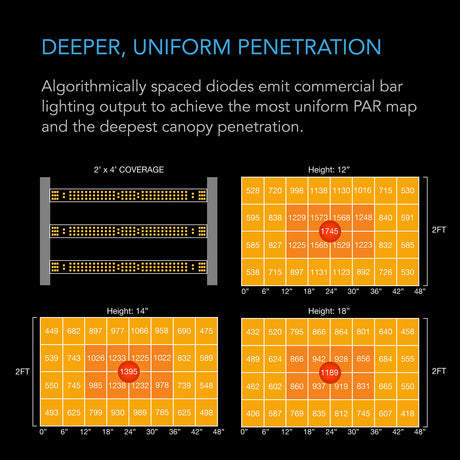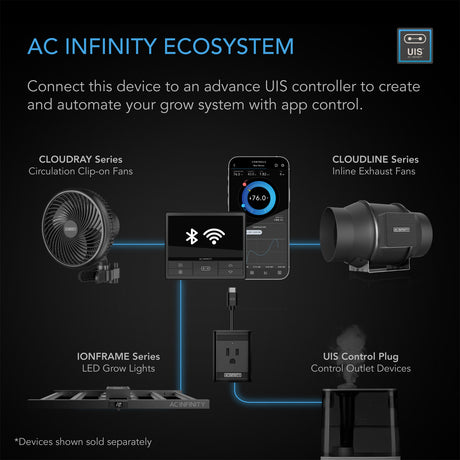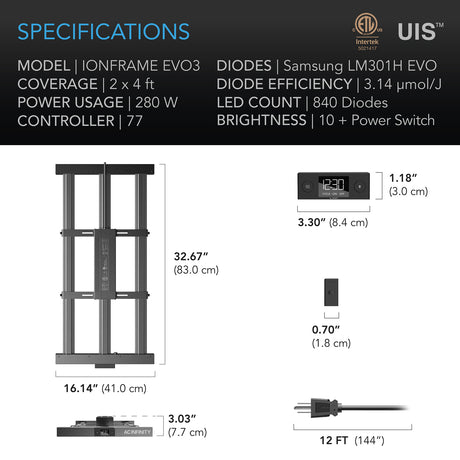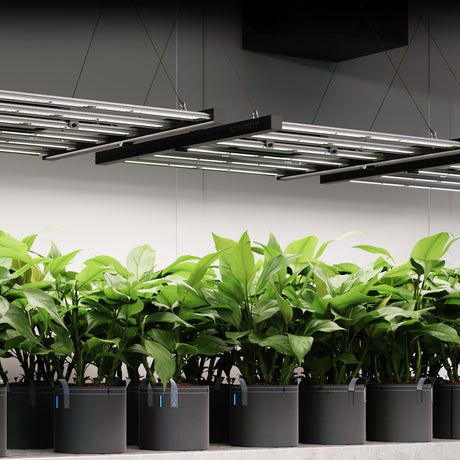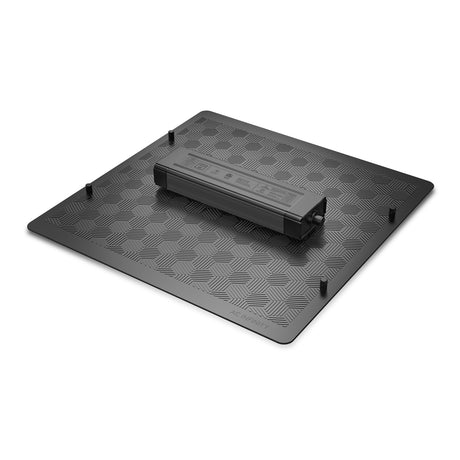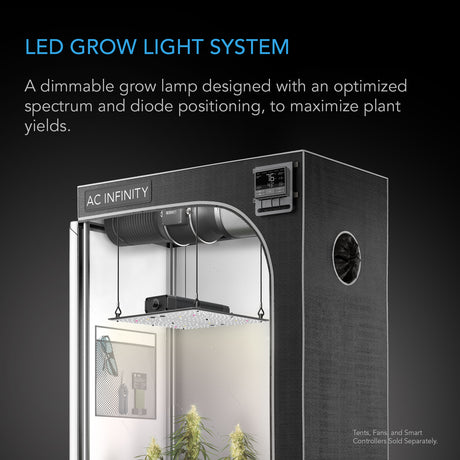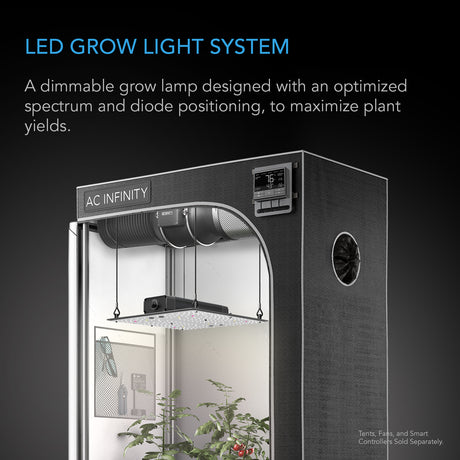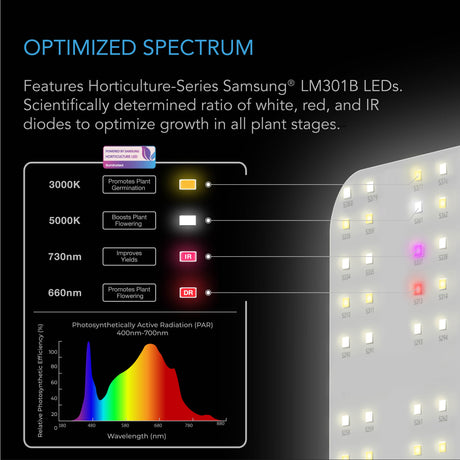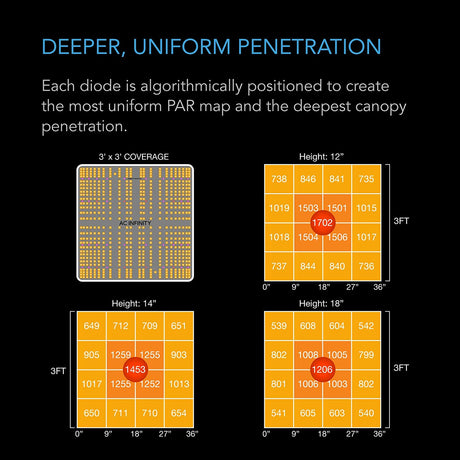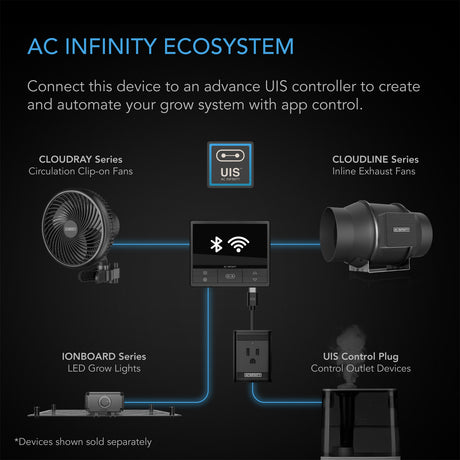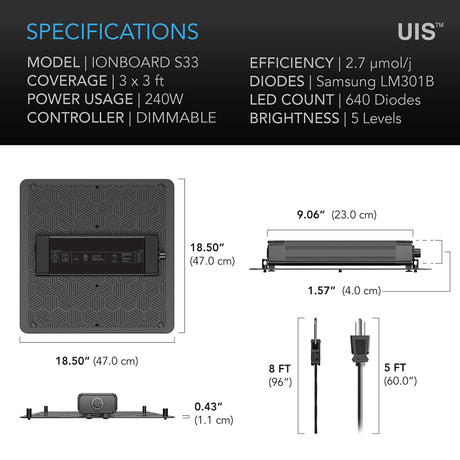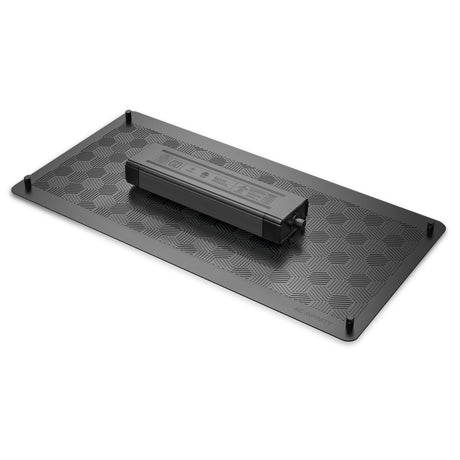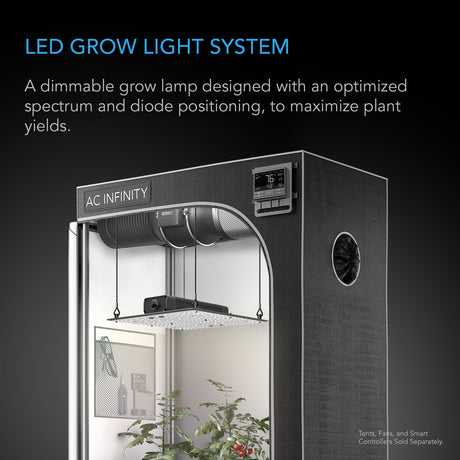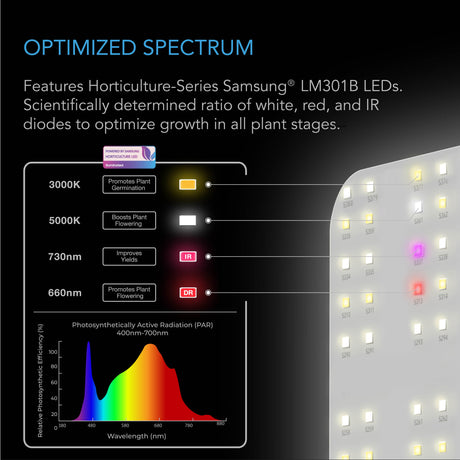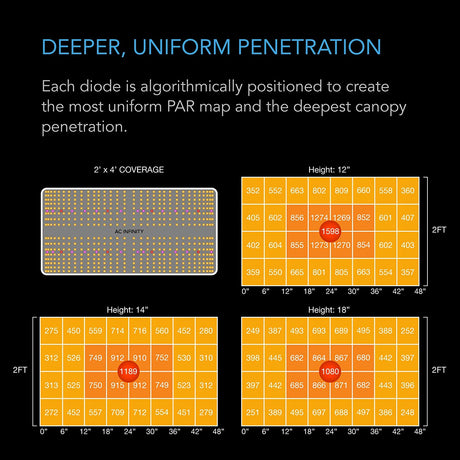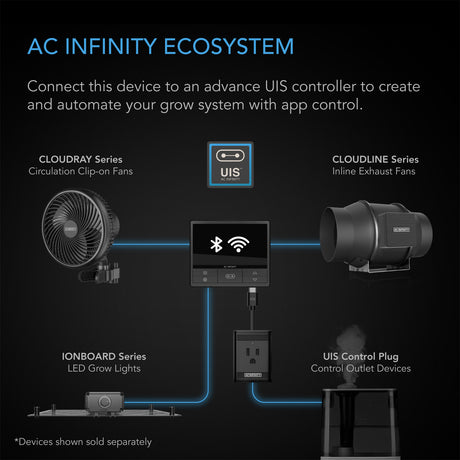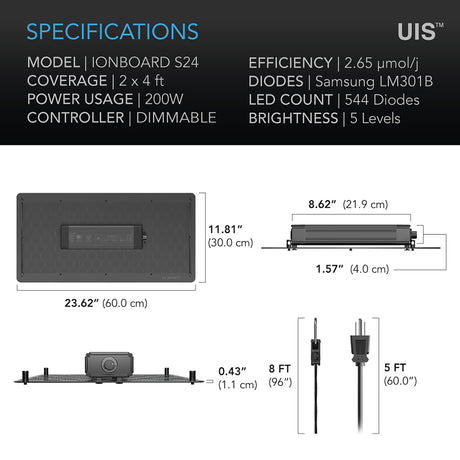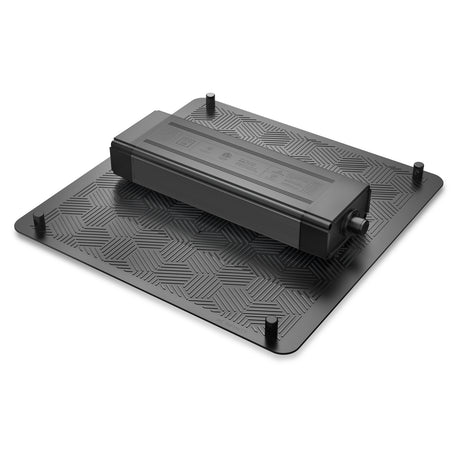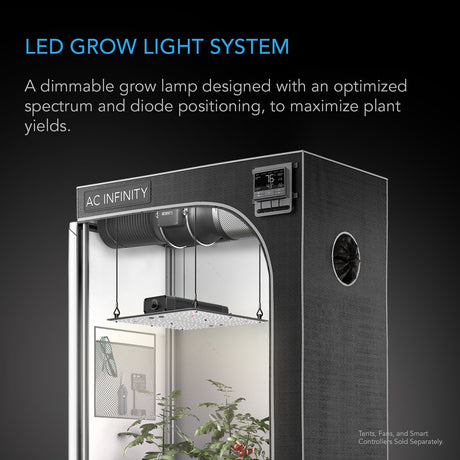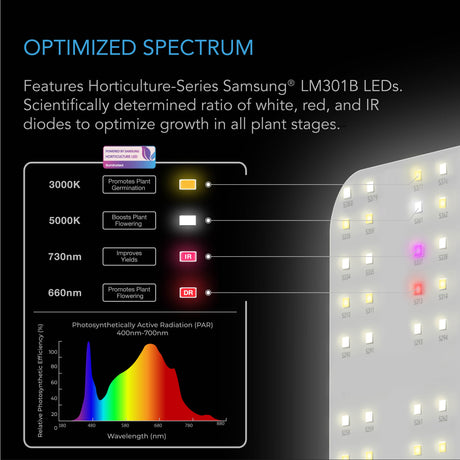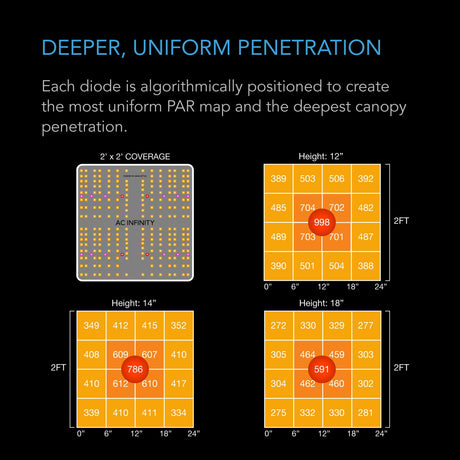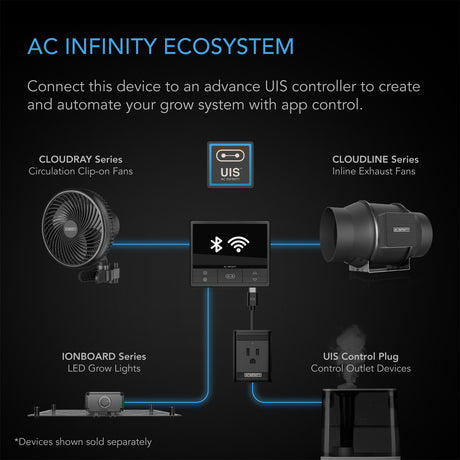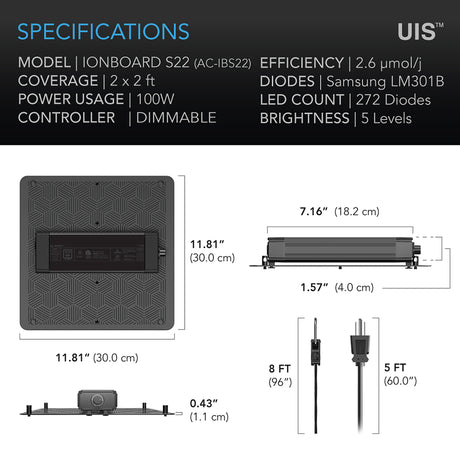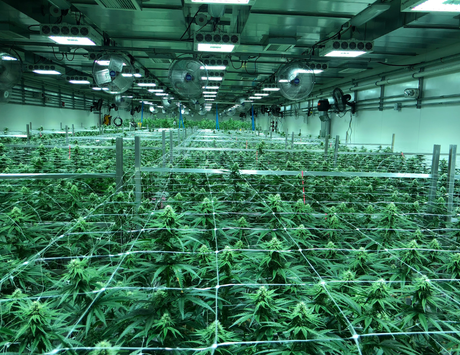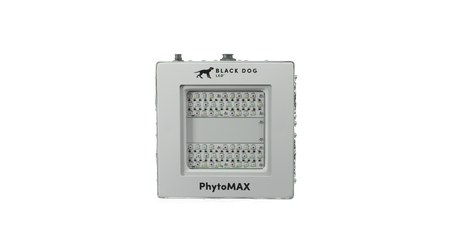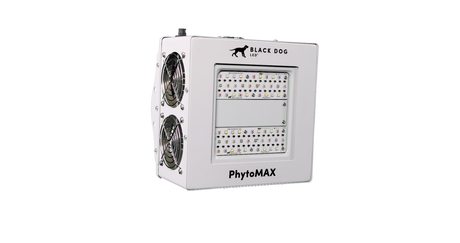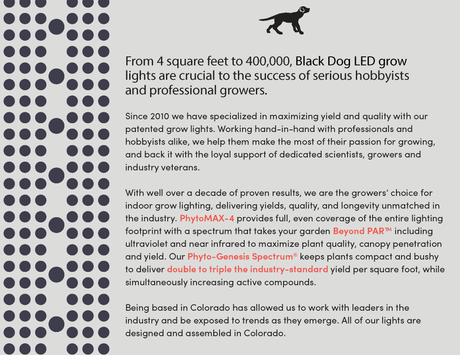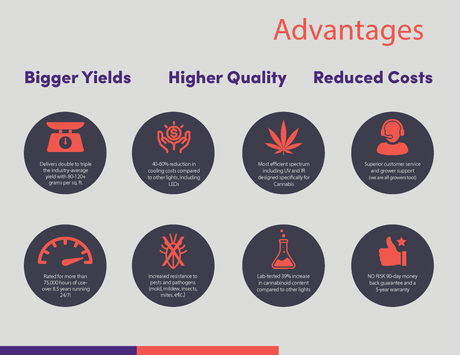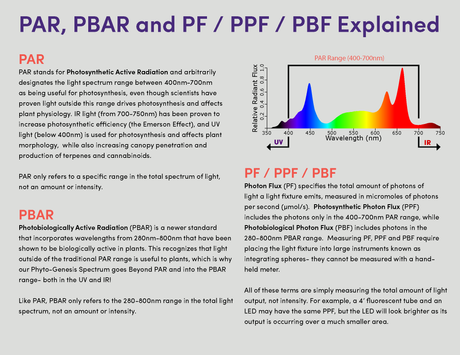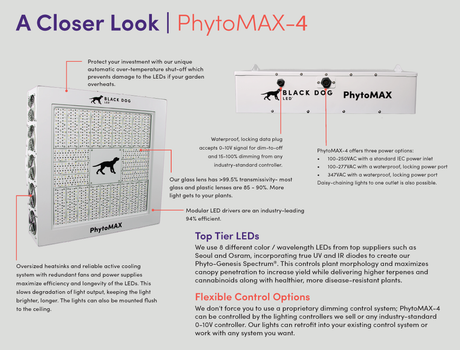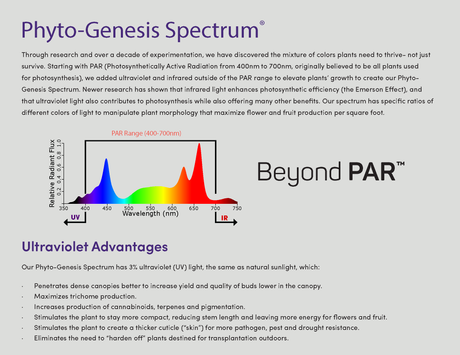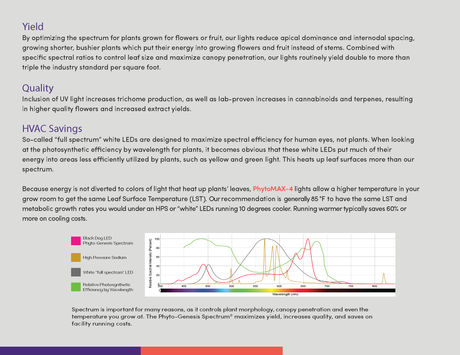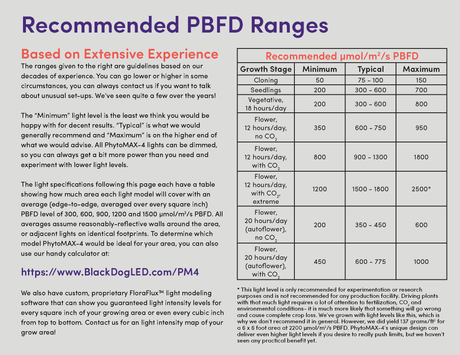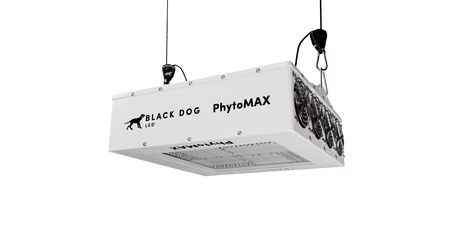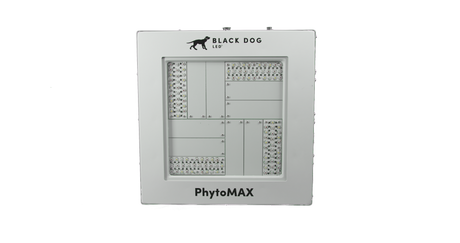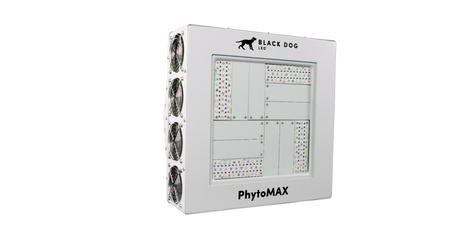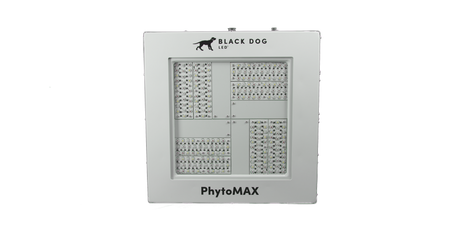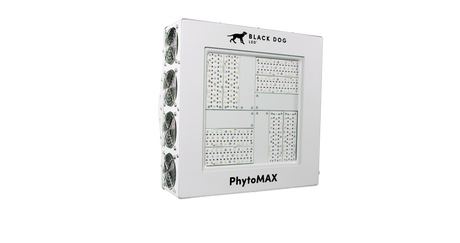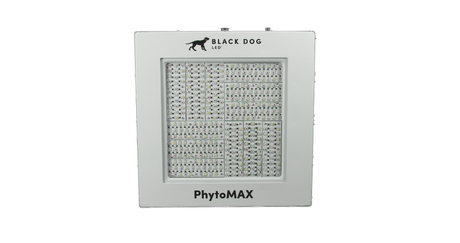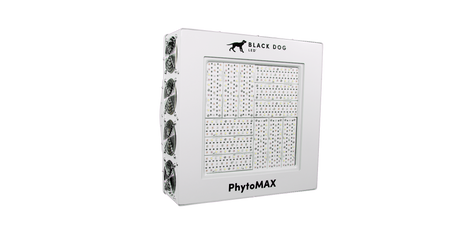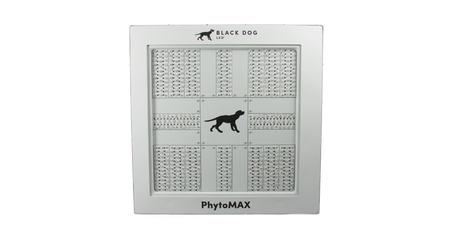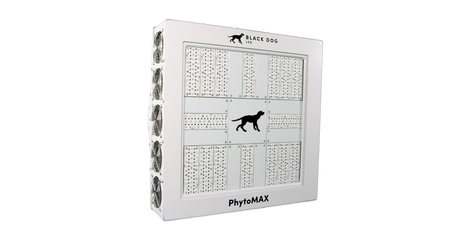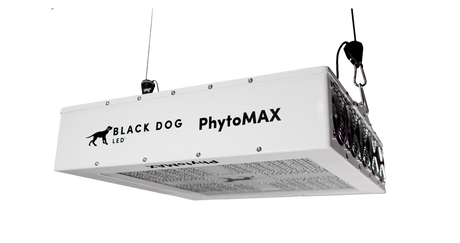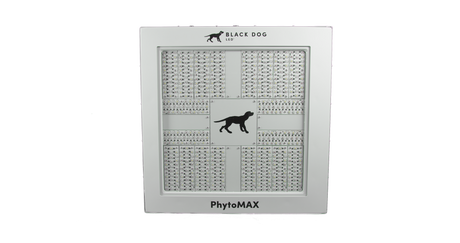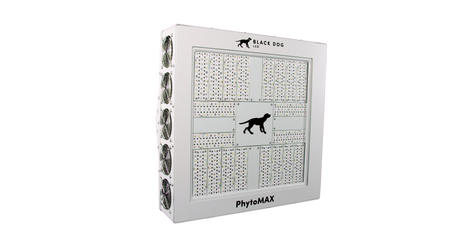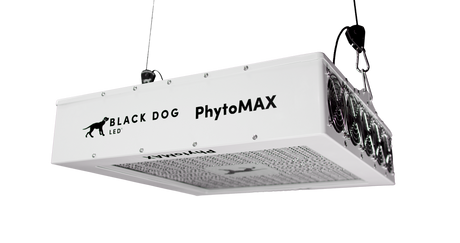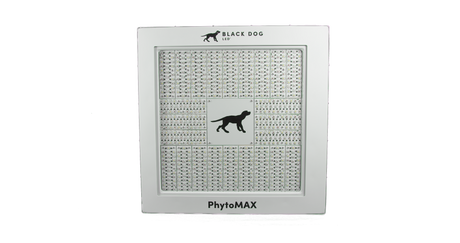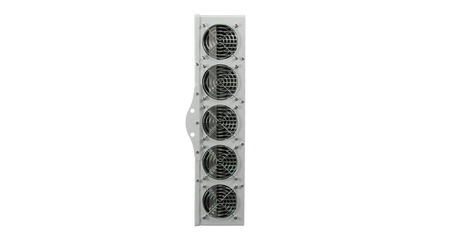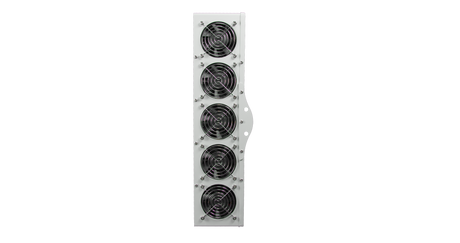What are the primary light spectrums used in LED grow lights, and how do they influence plant growth at different stages?
What are the primary light spectrums used in LED grow lights, and how do they influence plant growth at different stages?
- Extra 5% Off
AC Infinity
AC Infinity IONFRAME EVO10 Commercial LED Grow Light 1000W
In stockSale price $99900 Regular price $1,29900Unit price /Unavailable - Extra 5% Off
AC Infinity
AC Infinity IONFRAME EVO8 Commercial LED Grow Light 730W
In stockSale price $79900 Regular price $89900Unit price /Unavailable - Extra 5% Off
AC Infinity
AC Infinity IONFRAME EVO6 Commercial LED Grow Light 500W
In stockSale price $58900 Regular price $69900Unit price /Unavailable - Extra 5% Off
AC Infinity
AC Infinity IONFRAME EVO4 Commercial LED Grow Light 300W
In stockSale price $36900 Regular price $44900Unit price /Unavailable - Extra 5% Off
AC Infinity
AC Infinity IONFRAME EVO3 Commercial LED Grow Light 280W
In stockSale price $32900 Regular price $39900Unit price /Unavailable - Extra 5% Off
AC Infinity
AC Infinity IONBOARD S44 | Full Spectrum LED Grow Light 400W | Samsung LM301B | 4x4 Ft. Coverage
In stockRegular price $41900Unit price /Unavailable - Extra 5% Off
AC Infinity
AC Infinity IONBOARD S33 | Full Spectrum LED Grow Light 240W | Samsung LM301B | 3x3 Ft. Coverage
In stockRegular price $27900Unit price /Unavailable - Extra 5% Off
AC Infinity
AC Infinity IONBOARD S24 | Full Spectrum LED Grow Light 200W | Samsung LM301B | 2x4 Ft. Coverage
In stockRegular price $25900Unit price /Unavailable - Extra 5% Off
AC Infinity
AC Infinity IONBOARD S22 | Full Spectrum LED Grow Light 100W | Samsung LM301B | 2x2 Ft. Coverage
In stockRegular price $15900Unit price /Unavailable - Extra 5% Off
AC Infinity
AC Infinity IONBEAM S16 | Full Spectrum LED Grow Light Bars | Samsung LM301H | 16-Inch
In stockRegular price $9499Unit price /Unavailable - Extra 5% Off
AC Infinity
AC Infinity IONBEAM S11 | Full Spectrum LED Grow Light Bars | Samsung LM301H | 11-Inch
In stockRegular price $8499Unit price /Unavailable - Extra 5% Off
AC Infinity
AC Infinity IONBEAM U2 | Targeted Spectrum UV LED Grow Light Bars | 2-Bar Kit | 11-Inch
In stockRegular price $6299Unit price /Unavailable - Extra 5% Off
AC Infinity
AC Infinity IONBEAM U4 | Targeted Spectrum UV LED Grow Light Bars | 4-Bar Kit | 11-Inch
In stockRegular price $9299Unit price /Unavailable
